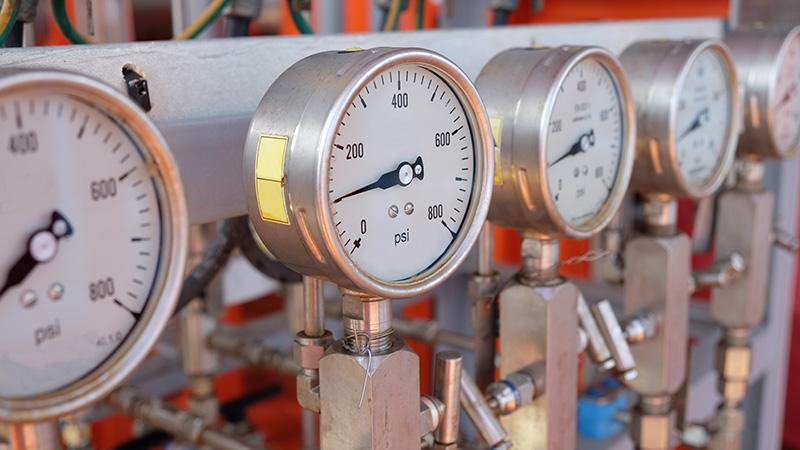Cutting costs and hassle with cleaner, drier compressed air
Compressed air is used in a huge variety of industrial processes, from plastics molding to food drying. In this post we discuss how accurate, stable dew point measurement can help you cut energy costs and maintain end-product quality in compressed air-based applications.
Which industrial applications use compressed air and why does it have such a big influence on energy costs?
The short answer to the first part of that question would be “Pretty much any application you can think of”. In industry, compressed air is everywhere. It helps to think of it like electricity – it’s a power source that drives conveyers, packaging lines, spray-painting equipment, metal presses – the list goes on and on. And when you think of it as a power source it’s easy to imagine why it has such a big impact on the amount of energy an industrial process or plant uses.
What kinds of problems can poor-quality compressed air lead to?
The quality of the air you use is critically important to the end result of the process. Let’s take spray painting as an example. Poor-quality air – i.e. air that contains dust, other particles, or water – will result in a poor-quality paint finish, and therefore a wasted product that can’t be sold. In semiconductor production, wet gases in compressed air systems can lead to problems such as low yield and poor reliability, while dust in the air can cause the products to short circuit.
On packing lines in the food and drinks industry, clean, dry air is an absolute must to maintain hygiene and preserve end-product quality. For example, if you’re using a filling gas to fill up packs of ham, you don’t want anything in there that isn’t supposed to be there. When air is pressurized, humid air condenses and form water droplets, which can lead to rust – and this can end up in with the food. When you’re drying plastics to make soda bottles, excessive moisture can result in brittle bottles with a cloudy finish.
In this way, moisture is a big problem for any kind of instrument or machine that uses compressed air, whether we’re talking about a food packing line or an automotive factory powered by tens or perhaps hundreds of robotic machines. If you’re not taking care of your air quality, you can end up with equipment that isn’t working properly or which needs constant maintenance.
What are the challenges faced when drying compressed air?
The approaches to drying depend on the dew point level you need to achieve. For applications where extreme dryness isn’t needed you might use low-cost refrigerant dryer equipment; for more demanding applications where the air needs to be extremely dry you might need a high-end desiccant dryer than can produce very dry dew points.
The challenge with a demanding dry-end setup is optimizing it so that you’re not wasting energy or losing capacity. The silica-based pellets in drying towers get wetter over time, so you need to be able to see when it’s time to switch from one tower to another in order to ensure your air stays dry. If you rely on an arbitrary time-based approach, you could be switching towers unnecessarily and therefore wasting energy and drying capacity. On the other hand, if you don’t make the switch in time the air could be too wet. With accurate, reliable dew point measurement in place, you can optimize your process and be sure you are always using high-quality, dry air.
What qualities should I look for when choosing humidity measurement instruments for my drying process?
One of the most important things to look for is a fast response time. In processes that use desiccant dryers you can quite often see a spike in humidity when switching drying towers, which can lead to water ending up in the system. Measurement instruments should have a response time that can be measured in tens of seconds to quickly detect this and allow corrective action to be taken.
It’s also important to pay attention to the robustness of the instrument sensors. The sensors in lower-end instruments can be overly sensitive to moisture, meaning your readings could be highly inaccurate, which can in turn have a huge impact on your production process. You certainly can’t afford to stop production for days at a time so that a measurement instrument that’s been exposed to water can stabilize and start producing accurate readings again.
Oil contamination can also be a problem for sensors. The lubrication oil used in compressor equipment can sometimes get into the airline, resulting in the sensors of your measurement equipment being covered in a fine oil spray. In normal circumstances the sensor would be a write off, unless it’s designed to cope with this kind of contamination and is easy to clean.
Your humidity measurement instruments are only as good as your calibration practices, and even the best instruments need regular calibration to ensure they remain accurate. In a large and complex industrial drying process you could be talking about tens of instruments – and that means a lot of time, effort, and money spent on calibration. The best approach is to look for solutions that have a long calibration interval and some sort of regular self-calibration feature.
What should I look for in a manufacturer when I’m choosing a humidity measurement solution for my specific drying process?
You should look for a supplier who can give you all-round support right from the start. You might need advice on selecting the right instrument for your specific process, where to install it, and how to configure it. Perhaps your process demands fixed wall-mounted solutions that are compatible with hand-held probes for spot checking, or you have specific calibration requirements. A good partner will be able to answer all these needs.
Discover Vaisala’s range of robust, easy-to-use dew point measurement solutions.






Add new comment